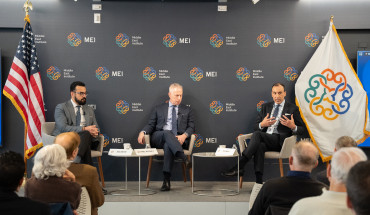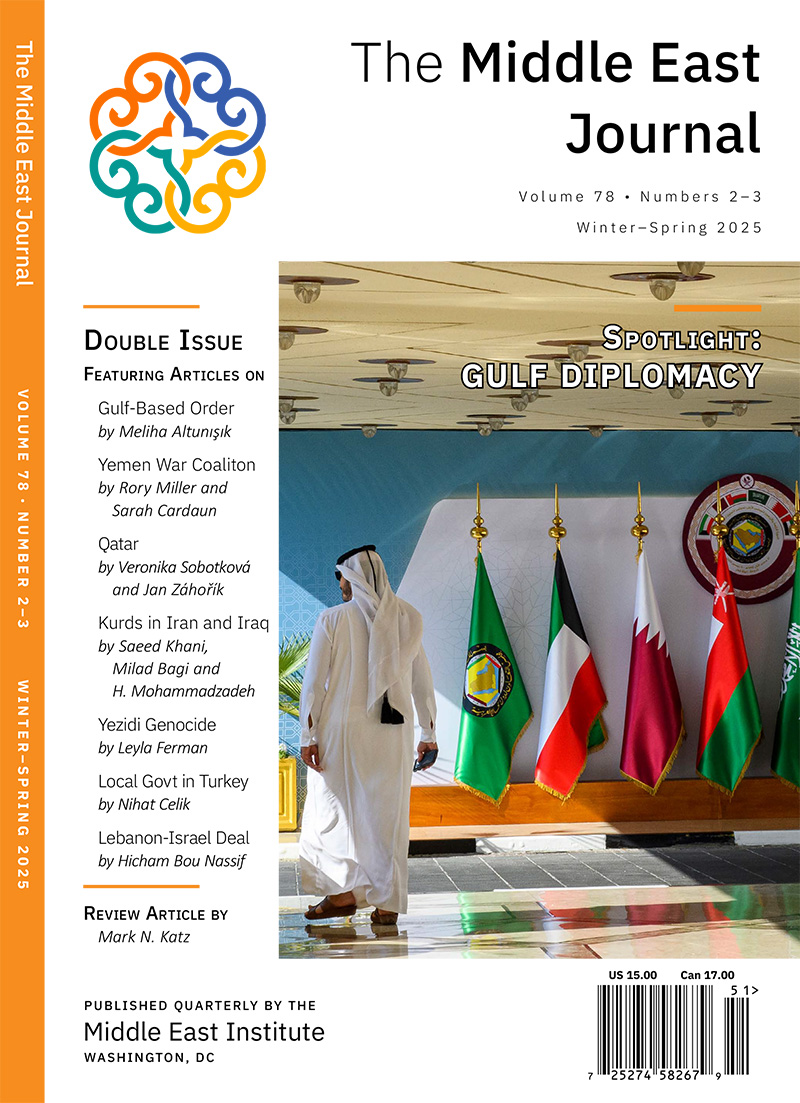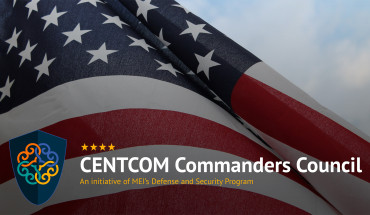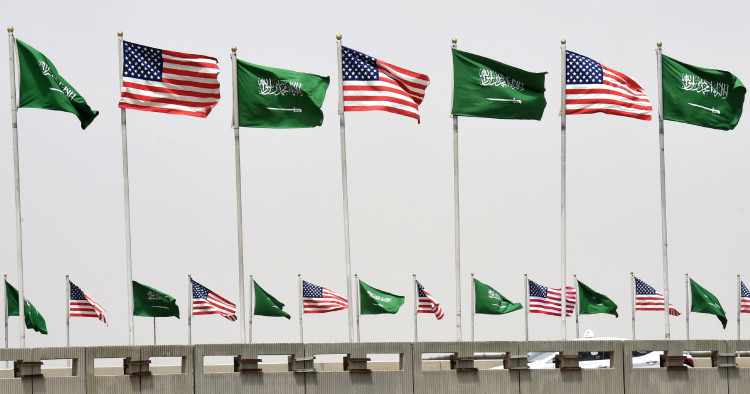As Saudi Arabia accelerates its transformation into a global technology powerhouse, the United States has a pivotal opportunity to redefine its partnership with the kingdom. Moving beyond the traditional oil-for-security framework, a new partnership centered on artificial intelligence (AI) and digital infrastructure can anchor US-Saudi relations in the 21st century. Saudi Arabia's Vision 2030, spearheaded by Crown Prince Mohammed bin Salman, aims to diversify the kingdom's economy and establish it as a leader in technological innovation. Significant investments have been made to develop domestic capabilities in AI and semiconductors, including the launch of the National Semiconductor Hub and partnerships with global tech firms such as Google. Events like LEAP 2025, an annual tech conference held in Riyadh, have showcased the kingdom's commitment, attracting billions in investments and positioning Saudi Arabia as a regional tech hub.
Saudi Arabia’s vast financial resources, strategic investments in AI, and surplus energy reserves position the kingdom as a formidable contender in the global race for computational dominance — and a pivotal node in the emerging AI ecosystem. For the United States, this presents a strategic opportunity to deepen ties with a key ally. The US can support Saudi Arabia's modernization efforts by collaborating on technology initiatives while securing its own interests in a region increasingly influenced by global tech competition. A partnership focused on innovation and shared technological advancement can redefine US-Saudi relations for the digital age.
Saudi Arabia is rapidly emerging as a formidable force in the global AI landscape. Under the ambitious Vision 2030 framework, the kingdom is channeling its substantial financial resources, strategic investments, and abundant energy reserves to position itself as a central node in the global AI ecosystem. At the forefront of this transformation is the Saudi Data and Artificial Intelligence Authority (SDAIA), which has developed a National Strategy for Data and AI aiming to place the kingdom among the top nations in AI by 2030. This vision was prominently showcased at the LEAP 2025 technology conference in Riyadh, where Saudi Arabia announced over $14.9 billion in AI investments. These investments underscore the kingdom's commitment to becoming a regional and global hub for AI, with billions allocated to infrastructure, AI, and funding rounds for startups. Notably, US AI chip startup Groq secured a $1.5 billion commitment from the kingdom to expand its AI chip delivery and establish a data center in Dammam. The collaboration between Groq and Aramco Digital is set to build the world’s largest AI inferencing data center, positioning Saudi Arabia as a critical hub for AI services across Europe, the Middle East, and South Asia. This massive computing facility will be dedicated to running AI models in real time, specifically focusing on the inference phase of AI processing — the stage where a trained AI model applies its knowledge to new, unseen data to generate real-time predictions or decisions, enabling rapid, scalable deployment of AI across sectors.
Geography, energy, and connectivity
Situated at the intersection of Asia, Africa, and Europe, Saudi Arabia’s geography makes it a vital node in the emerging global network of AI infrastructure and digital connectivity. This strategic location offers unparalleled logistical advantages for data routing, low-latency cloud services, and the distribution of AI capabilities across three continents. As global data flows become a critical dimension of national power, the kingdom’s role as a geographic gateway enables it to serve as a regional AI backbone, seamlessly connecting Eastern and Western markets.
Equally important is Saudi Arabia’s energy surplus. As the world moves deeper into compute-heavy AI systems, the energy requirements for training and deploying large language models (LLMs) and running advanced inferencing workloads are skyrocketing. Saudi Arabia possesses the capacity to meet this demand at scale. It is one of the few nations capable of supplying renewable and hydrocarbon-based energy at industrial volumes and relatively low costs — conditions critical for AI data centers, which often consume tens of megawatts of continuous power. As of 2025, Saudi Arabia hosts 33 existing data centers and has 42 additional facilities under development, collectively projected to add approximately 2.2 gigawatts (GW) of IT load capacity — nearly a sevenfold increase over current levels. The kingdom's energy infrastructure further bolsters its AI ambitions. The Desert Dragon Data Centers project, for instance, is set to deliver 187 megawatts (MW) of capacity across multiple sites, including Riyadh, Jeddah, Dammam, and Neom.
Beyond power and location, Saudi Arabia is investing heavily in digital infrastructure — undersea cables, hyperscale data centers, and cross-border fiber networks — that further enhance its global connectivity profile and signal its ambition to become a digital transit hub. This expanding bandwidth infrastructure will be indispensable for moving massive datasets required by AI systems and for enabling real-time cloud-based services.
Taken together, these geographic, energy, and connectivity advantages position Saudi Arabia not merely as a regional actor, but as a rising infrastructure power in the global AI race. For the United States, this makes the kingdom a strategic partner of choice — one that can host, sustain, and scale American AI deployments while offering geostrategic leverage over competing tech corridors being built by China, particularly through its Digital Silk Road initiative. In a world where the map of power is being redrawn in compute, cables, and kilowatts, Saudi Arabia’s physical and digital geography is becoming a central asset.
Investing in America's tech future
Saudi Arabia's Public Investment Fund (PIF), the country’s sovereign wealth fund, has significantly expanded its presence in the US technology sector, reinforcing the kingdom's role in the global AI ecosystem. As of Q3 2024, PIF increased its US equity holdings to $26.7 billion, up from $20.7 billion in the previous quarter, according to a US Securities and Exchange Commission (SEC) filing. This growth reflects strategic investments in leading tech companies, including Lucid Group, Uber, and Electronic Arts.
PIF's investments extend beyond AI. The fund holds a stake in Lucid Motors, an American electric vehicle (EV) manufacturer, and has committed to purchasing up to 100,000 EVs over the next decade. Additionally, through its gaming subsidiary, Savvy Games Group, PIF has invested over $37.8 billion in the gaming industry, including the $4.9 billion acquisition of US mobile game developer Scopely. These investments not only provide vital capital to US startups, but also underscore a broader transformation in the US-Saudi relationship — one that is increasingly anchored in shared technological advancement alongside the traditional pillars of energy and security. The scale and focus of Saudi Arabia’s tech investments serve as clear evidence that the bilateral partnership has entered a new phase, where innovation and digital infrastructure are now central to strategic cooperation.
Toward a strategic AI framework
The current structure of US export controls — particularly as applied to advanced AI chips — risks weakening America’s strategic position in the very regions it seeks to stabilize. The Biden administration's Framework for Artificial Intelligence Diffusion classifies countries into three tiers to regulate access to advanced AI chips. Tier 1 includes the US and 18 key allies with unrestricted access. Tier 2 covers most other nations, including India, Israel, the UAE, and Saudi Arabia, which face controlled access with licensing requirements and caps on AI chip imports. Tier 3 comprises competitors and adversaries such as China, Russia, Iran, and North Korea, which are effectively barred from importing advanced AI chips and model weights. Saudi Arabia is categorized as a Tier 2 country, a designation that restricts its access to cutting-edge semiconductors through chip caps and case-by-case licensing. The philosophy underpinning the AI diffusion rule is the treatment of compute as a strategic commodity — one that the United States should control by determining who gets access to it and in what quantities. In this framework, compute is no longer merely a technical resource; it becomes a core lever of geopolitical power.
While intended to prevent the leakage of dual-use technologies to adversaries like China, this tiered framework increasingly penalizes key US partners and obstructs deeper, long-term technological alignment. It also rests on the flawed assumption that America’s monopoly over compute is a given — and that China will follow a linear, constrained trajectory toward compute supremacy, limited by US-controlled chokepoints across the global compute value chain. This assumption, however, no longer holds true.
Huawei's recent advancements underscore this shift. The company is preparing to test a next-generation AI processor designed to compete with leading global offerings. Despite US sanctions restricting access to critical chip-making technologies, Huawei has demonstrated resilience by using advanced packaging techniques to combine multiple components for enhanced performance. While still in early development, the chip reflects China's accelerating capabilities in AI hardware. These developments challenge the assumption of a linear, delayed trajectory for China’s AI ascent. They also suggest that chokepoints alone — whether in chip design, manufacturing, or export policy — will not be sufficient to meaningfully slow down China’s progress in advanced AI.
This is why the current approach to export controls is not only diplomatically counterproductive, it is also economically self-defeating. It undermines the competitiveness of American companies by eroding their global market share and profitability, while leaving them at a disadvantage against less-constrained rivals, particularly Chinese digital infrastructure providers such as Huawei and Alibaba Cloud. These firms are rapidly expanding across the Global South, offering turnkey AI ecosystems devoid of the strategic guardrails the United States seeks to promote. If Washington fails to deliver credible, scalable alternatives, it risks forfeiting its influence over the architecture of global AI infrastructure.
A more strategic path forward would be to discard the tiered classification system altogether and replace it with a unified global licensing regime anchored in binding, government-to-government AI agreements. Such an agreement with Riyadh — akin to the bilateral assurances embedded in the 2024 G42-Microsoft deal — would establish a new template for secure AI collaboration. Under this model, Saudi Arabia would commit to strong export controls, validated end-user standards, and co-governed infrastructure, in exchange for broader access to US AI hardware and foundational models. Crucially, this would provide the policy flexibility to account for strategic trust and shared governance capacity, rather than forcing a binary “Tier 1 or Tier 2” decision.
The United States could establish a replicable model for digital cooperation across the Gulf and the broader Global South — and unlock greater market access for American firms — by negotiating a comprehensive AI partnership with Saudi Arabia. In a world where compute capacity, data localization, and cloud sovereignty are becoming strategic levers of power, such a partnership would offer a blueprint for aligning security, economic interests, and technological standards. The future of export controls must reflect the realities of interdependence and coalition-building, rather than relying on rigid hierarchies of trust. By enabling Saudi Arabia to accelerate its transformation into a diversified, knowledge-based economy, the United States can simultaneously reinforce its strategic influence in the Middle East by embracing this forward-looking framework.
Mohammed Soliman is a Senior Fellow at the Middle East Institute, where he explores the policy challenges associated with the intersection of technology, geopolitics, and trade in the Middle East and emerging markets.
Photo by FAYEZ NURELDINE/AFP via Getty Images
The Middle East Institute (MEI) is an independent, non-partisan, non-for-profit, educational organization. It does not engage in advocacy and its scholars’ opinions are their own. MEI welcomes financial donations, but retains sole editorial control over its work and its publications reflect only the authors’ views. For a listing of MEI donors, please click here.













